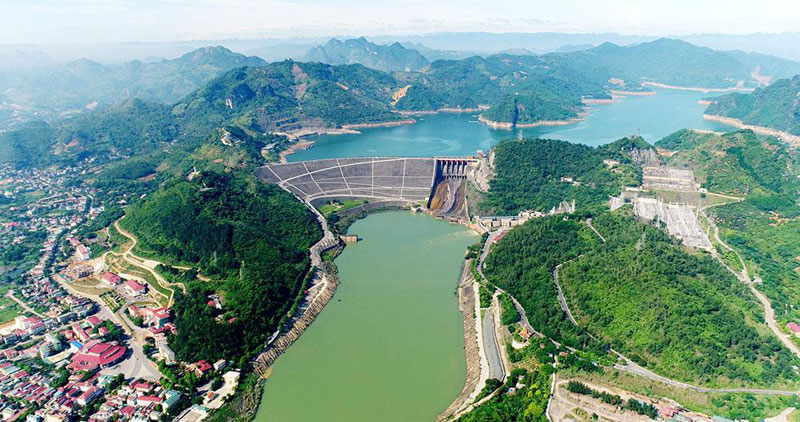


 In 2019, the total
water volume flowing into the Hoa Binh reservoir stood at only 37.2 billion
cu.m, equivalent to 68.6 percent of the yearly average.
In 2019, the total
water volume flowing into the Hoa Binh reservoir stood at only 37.2 billion
cu.m, equivalent to 68.6 percent of the yearly average.
Leaders of the Hoa Binh Hydropower Company said that in 2019, the total water volume flowing into the Hoa Binh reservoir stood at only 37.2 billion cu.m, equivalent to 68.6 percent of the average level in many years. The rainy season saw only one flood spell, with the water peak volume of 7,700 cu.m per second in early August, but it lasted for a very short time.
From June until the end of 2019, the reservoir faced severe water shortage, even in the rainy season (from July to September), during which the water level only reached half of the yearly average level in many years.
At the end of the year, the level was measured at 102 m, which was 10 metres lower than the same period of 2018 and 15 metres lower than the average level. The electricity generation could not meet the initial plan, leading to a 300 billion VND (12.9 million USD) deficit in Hoa Binh’s State budget collection contributed by the Hoa Binh hydropower plant.
Forecast showed that hydrology in the first half of 2020 would worsen due to drought and low water levels in reservoirs, causing difficulties for electricity generation and water supply for the lower regions.
The Hoa Binh Hydropower Company has launched measures and strived to fulfil the assigned target of nearly 8.26 billion kWh, as well as maintain the water level in the reservoir at around 116 m at the end of the year.
To meet the targets, the company will work with relevant agencies to keep a close watch on the hydrological situation and devise a suitable water management plan for electricity generation, flood and drought prevention.
It also needs to effectively carry out plans for disaster mitigation and search and rescue in the year, join hands with relevant parties in arranging suitable operation mode of turbines in permitted capacity to ensure stable operations, as well as maintain a minimum flow in the dry season./.